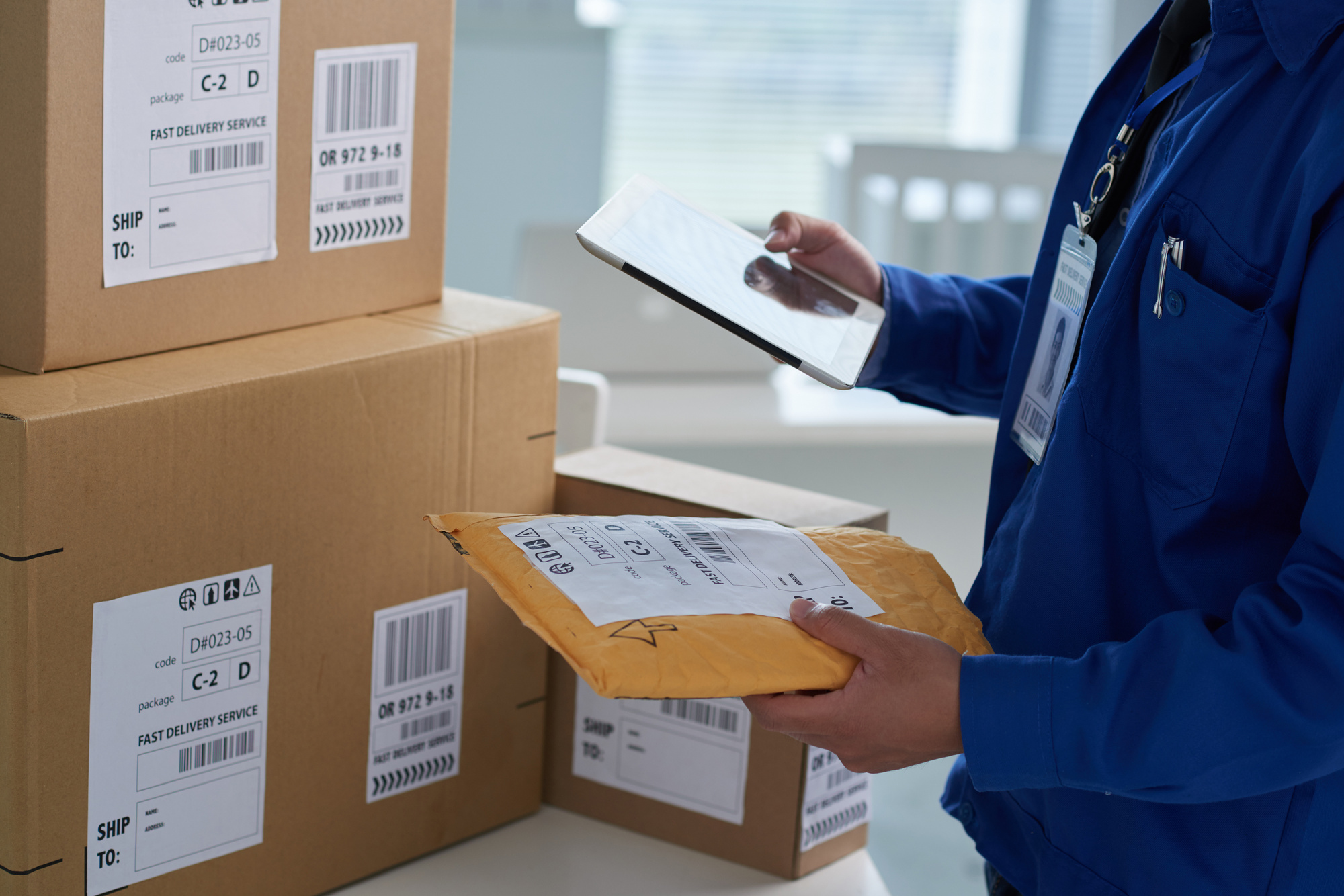Shipping options for small business is always a challenge, but shipping big boxes makes things even more complicated.
Don’t worry, though, we’ve created this simple guide to show you the best way to ship packages when dealing with oversized merchandise. Let’s get started!
Choosing the Right Carrier for Shipping Big Boxes
All of the major package carriers have strict size and weight limitations and going over them can start to cost you some serious cash. Here’s a look at each option and some pros and cons.
United States Postal Service (USPS)
Shipping through the post office comes with some advantages, including that you can do most of the work online and it’s often less expensive than other options. However, they’re not known for being super-reliable when it comes to on-time deliveries and your tracking options may be limited.
USPS is generally better for small package shipping. However, if your package is less than 70 pounds and smaller than 108” in length and 165” in girth and you don’t need delivery on a specific date then this may be a good option. You can ship boxes that are larger or heavier than this, but it’s generally too expensive.
Courier Shipping
Companies like UPS, FedEx, and DHL all fall into the “courier shipping” category. They’ll ship boxes that weigh up to 150 pounds and are as large as 108” long and 165” wide at no extra charge. If your package is larger than this, they may ship it, but you’ll pay an extra fee.
This is generally a good option for business owners since they offer better tracking, express delivery options, and packing and crating services (for an extra fee).
Consolidated Freight
If you have many large boxes to ship, you’ll want to explore consolidated freight. When you use this method, the boxes you ship share space in a truck with other boxes that are headed in the same direction. These services are provided by licensed and insured shippers.
Sometimes, it includes other advantages, like loading and unloading by hand (instead of with a forklift) temperature-controlled vehicles, and professional packaging.
LTL or economy freight requires you to pack your own boxes and help with loading the truck. This service is best for products that aren’t very valuable and aren’t fragile. It’s also a good option if you’re shipping more than 15 boxes at a time.
In this case, your boxes will likely be kept together on a pallet. This keeps the boxes together and reduces the chances that they’ll get damaged during the shipping process.
You can also choose “white glove” service which includes indoor pickup and delivery and handloading. It’s perfect for fragile or valuable items. The drawbacks are that it’s quite expensive and the shipping times are often much longer.
It’s often best to call around and make sure that you’re getting the best price and the services you need before committing to any particular carrier.
Large Box Packaging Tips
Once you’ve chosen your carrier, the other key part of learning how to ship large packages is understanding how to package them correctly. If you don’t your items may arrive damaged, which will cost you both in terms of lost product and, possibly, lost customers.
These tips will help you avoid these problems.
Use the Right Supplies
Trying to cut corners when it comes to packaging supplies is a sure way to end up with problems. Take a look at these shipping products and make sure you always stay stocked up so you’re not tempted to skip any important steps.
When you’re shipping large or heavy boxes, the packaging becomes even more important. There’s a good chance that your boxes will be lifted by forklift instead of by hand and that they will change trucks several times. Each time it’s moved this way, there’s a greater chance of damage.
If your boxes aren’t packed properly, some carriers will even refuse to accept them.
When you’re considering your packaging, make sure that you’re confident it can withstand problems like getting dropped, being stacked, being subject to the vibrations that occur in the truck and/or conveyer belt, and the humidity and temperature changes that are likely to occur.
Use a Proper Palate
If you have very heavy items to ship, you’ll want to put them on a pallet and make sure they’re secure. Wood or plastic palates are your best option. Just make sure the total weight doesn’t exceed the palate’s weight limit.
Choose Durable Boxes
Corrugated cartons are your best bet when it comes to boxes. They’re strong enough to hold up to the rigors of shipping and won’t get crushed even of other heavy boxes are packed on top of them.
Add Wrapping and Cushion
To avoid damage, you don’t want the contents of your package to be able to move around. You’ll want to add plenty of padding and cushioning. Don’t make the mistake of using packing paper or newspaper. This will compress during shipping, offering less protection.
Instead, opt for bubble wrap, packing peanuts, or other types of padding designed specifically for shipping.
Double-Box
To increase safety even more, put your box inside a slightly larger box and fill the extra space with air pillows. When using this method, make sure there are at least 2 inches of space between the two boxes.
Use Water-Activated Tape
There are many different types of packing tape, but fiberglass-reinforced, water-activated tape is the best option. This will actually form a bond with the corrugated cardboard so you won’t have to worry about the box accidentally coming open during its trip.
Now You’re Ready to Ship Safely!
Now that you understand everything that goes into shipping big boxes, you’re ready to make the best decisions for your business.
Looking for even more great business tips? Keep browsing through the rest of our blog!

